What are Landslides? |
|
Landslides are rock, earth, or debris flows on slopes due to gravity.
|
|
They can occur on any terrain given the right conditions of soil, moisture, and the angle of slope.
|
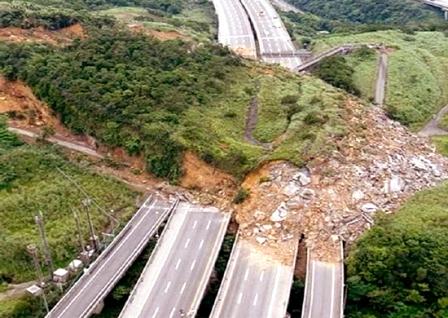 |
|
Integral to the natural process of the earth's surface geology, landslides serve to redistribute soil and sediments in a process that can be in abrupt collapses or in slow gradual slides.
|
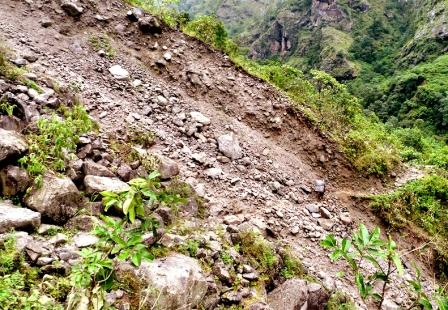 |
What causes Landslides? |
|
Some slopes are susceptible to landslides whereas others are more stable.
|
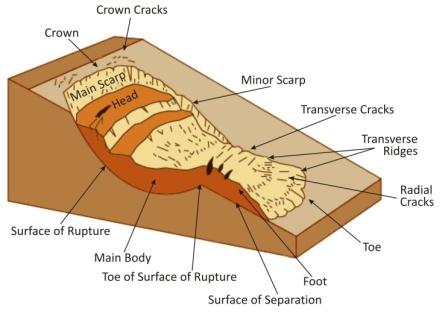 |
|
Many factors contribute to the instability of slopes, but the main controlling factors are the nature of the underlying bedrock and soil, the configuration of the slope, the geometry of the slope, and ground-water conditions.
|
Types of Landslides |
||||||||
|
|
||||||||
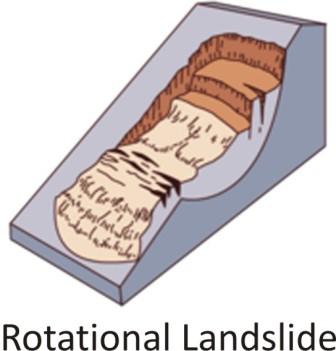 |
Rotational slide: This is a slide in which the surface of rupture is curved concavely upward and the slide movement is roughly rotational about an axis that is parallel to the ground surface and transverse across the slide.
|
|||||||
|
|
||||||||
|
Translational slide: In this type of slide, the landslide mass moves along a roughly planar surface with little rotation or backward tilting.
|
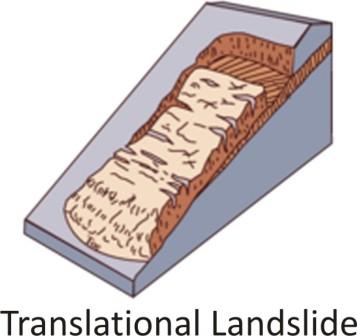 |
|||||||
|
|
||||||||
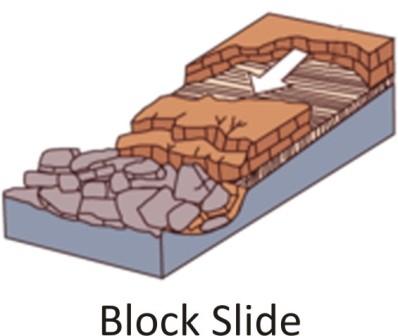 |
Block slide: is a translational slide in which the moving mass consists of a single unit or a few closely related units that move downslope as a relatively coherent mass.
|
|||||||
|
|
||||||||
|
Rockfall: Falls are abrupt movements of masses of geologic materials, such as rocks and boulders, that become detached from steep slopes or cliffs. Separation occurs along discontinuities such as fractures, joints, and bedding planes, and movement occurs by free-fall, bouncing, and rolling. Falls are strongly influenced by gravity, mechanical weathering, and the presence of interstitial water.
|
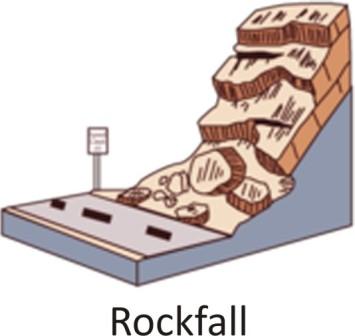 |
|||||||
|
|
||||||||
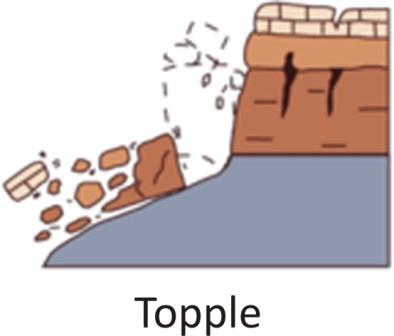 |
Topple: Toppling failures are distinguished by the forward rotation of a unit or units about some pivotal point, below or low in the unit, under the actions of gravity and forces exerted by adjacent units or by fluids in cracks.
|
|||||||
|
|
||||||||
|
Debris flow: A debris flow is a form of rapid mass movement in which a combination of loose soil, rock, organic matter, air, and water mobilize as a slurry that flows downslope. Debris flows include less than 50% fines. Debris flows are commonly caused by intense surface-water flow, due to heavy precipitation or rapid snowmelt, that erodes and mobilizes loose soil or rock on steep slopes.
|
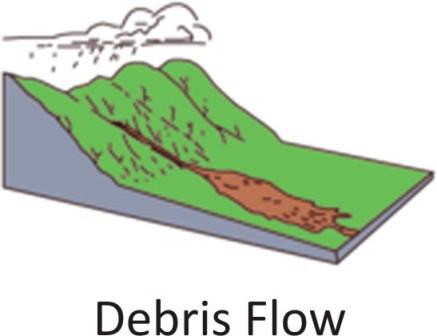 |
|||||||
|
|
||||||||
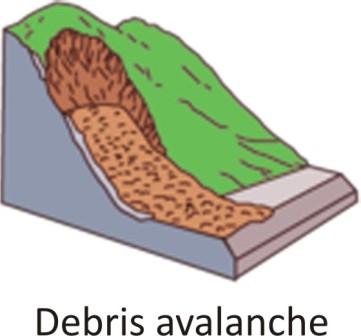 |
Debris avalanche: This is a variety of very rapid to extremely rapid debris flow.
|
|||||||
|
|
||||||||
|
Earthflow: Earthflows have a characteristic "hourglass" shape. The slope material liquefies and runs out, forming a bowl or depression at the head. The flow itself is elongate and usually occurs in fine-grained materials or clay-bearing rocks on moderate slopes and under saturated conditions.
|
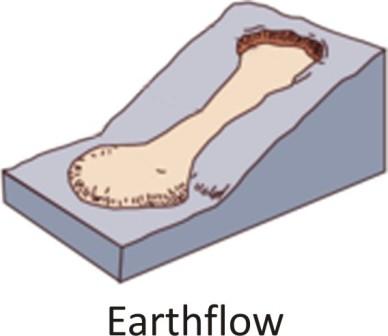 |
|||||||
|
|
||||||||
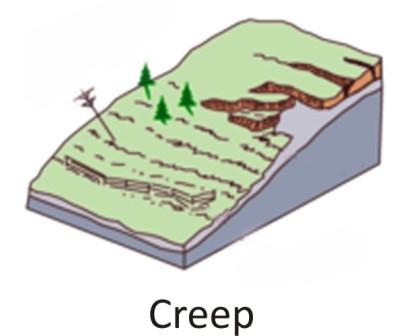 |
Creep: Creep is the imperceptibly slow, steady, downward movement of slope-forming soil or rock. Movement is caused by shear stress sufficient to produce permanent deformation, but too small to produce shear failure.
|
|||||||
|
|
||||||||
|
Lateral Spreads: Lateral spreads are distinctive because they usually occur on very gentle slopes or flat terrain. The dominant mode of movement is lateral extension accompanied by shear or tensile fractures.
|
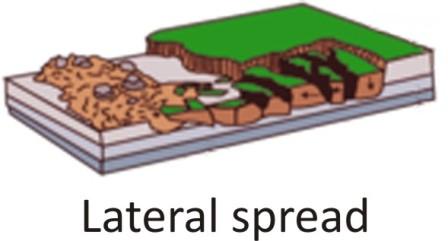 |
|||||||
Serious damages due to Landslides |
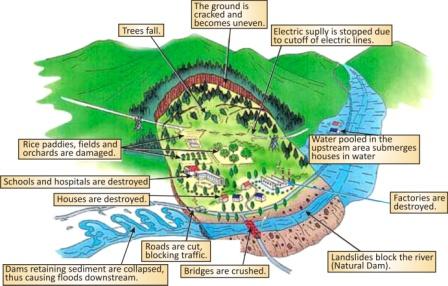 |
Watch this Video ! |